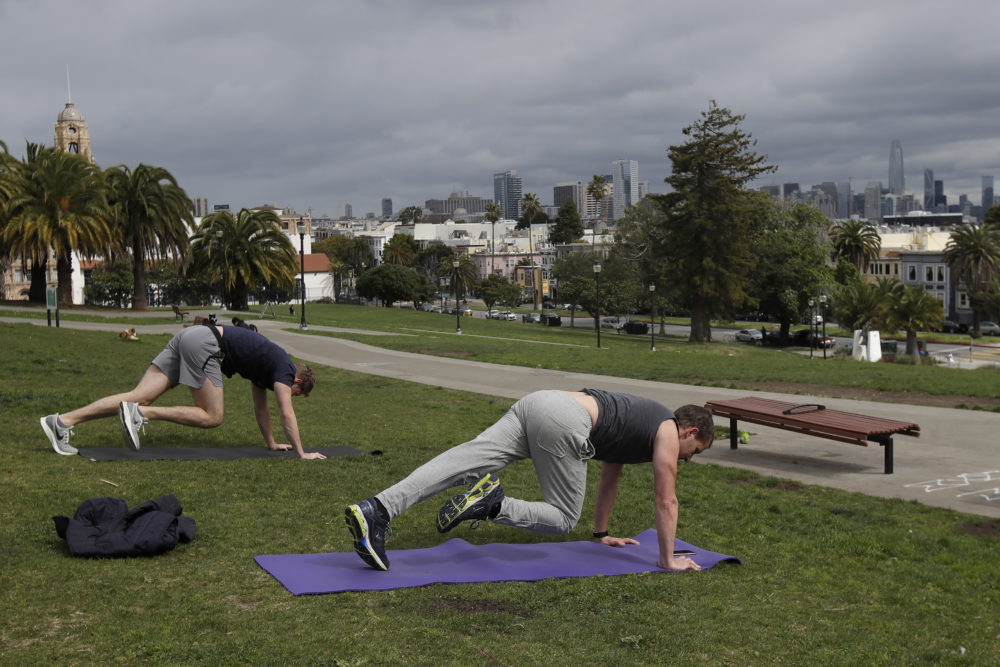
By Robert L. Herron |
Without question the SARS-CoV-2 virus, COVID-19 illness, and public-health responses have made a tremendous impact on the world in which we live. As the health experts continue to learn more about the virus and public-health measures evolve, in the coming weeks and months ahead – more people will return to work. The process of returning to work will differ for everyone. As such, in the world of sport, the challenges of returning to training and competition must be met with the reality that things have changed.
To this end, the National Strength and Conditioning Association (NSCA), and their COVID-19 Return to Training Taskforce, recently published guidelines to assist those preparing for the new normal. Within the report, the guidelines discuss a number of issues that require an altered plan of action for those wishing to return to training for sport and sport competitions. The guidelines are summarized below. It should be noted that everyone is encouraged to read the full guidelines and resources, follow best-practices, and obey the policies put forth by one’s organization, local-, state-, and federal governments.
Minimizing Risk – Scheduling
Currently, the public health recommendations still encourage social distancing. In sport, this is obviously a challenge. Those working in sport should attempt to minimize the COVID-19 related risks for everyone involved by making sure the training schedule allows for smaller group sizes, minimizes person-to-person exposures, allows appropriate time to clean facilities between sessions. This is important in training applications but also in other day-to-day activities (i.e., film sessions, medical treatment, meetings, dining options, etc.).
Sanitation Procedures – People, Facilities, & Equipment
Safety should be the number one priority in all sport-related activities. Weight-room training surfaces and group spaces (i.e., restrooms, meeting spaces, etc.) should be cleaned regularly and between repeated exposures. Proper cleaning supplies should be readily available. Furniture items and equipment that are unnecessary should be removed and placed in storage to reduce the number of items that need cleaning. Fresh air circulation and allowing sunlight to enter the space are recommended.
Training Safety Following Period of Inactivity
For a number of reasons, athletes may have experienced limited exposure to training during this, unprecedented period. As such, the NSCA’s Guidelines recommend two resources.
- CSCCa & NSCA Joint Consensus Guidelines for Transition Periods: Safe Return to Training Following Inactivity was published in 2019 and aims to provide guidelines for protecting athletes for situations similar to those most are experiencing due to the pandemic. In short, coaches should refer guidelines and alter training sessions to account for risks related to exertional heat illness, exertional rhabdomyolysis, and cardiorespiratory failure in athletes. The guidelines suggest alterations for the first 2-4 weeks.
- The NCAA Sport Science Institute’s Interassociation Recommendations for Preventing Catastrophic Injuries in Death in Collegiate Athletes was also published in 2019 and provides further support with respect to lowering risk for strength and conditioning coaches – more specifically – at the NCAA level.
Along with individual-athlete and environmental considerations, the guidelines recommend no more than 3 training sessions per week, with 1-2 days of recovery between sessions, and favor the upper-limits of recovery time with respect to work-to-rest ratios. Additionally, initial programming should avoid eccentric- and plyometric-heavy activities until athletes have had time to adjust to consistent training stimuli. An initial focus of introductory programming is encouraged with an emphasis on redeveloping dynamic-movement patterns within the warm-up period. As always, strength and conditioning professionals should follow best practices.
Other Important Factors
The athlete’s primary needs are still of upmost importance. This includes reacclimating to their “normal” schedule, managing stress, getting an appropriate amount of sleep, meeting their nutritional needs, and taking care of themselves and other non-athletic responsibilities.
In summary, these are difficult times. When working with athletes, make safety a priority and follow the policies established by health experts and those within your government. It is important to have a plan in place that protects the athletes and those working with and around them. While transitioning back to a regular schedule, be mindful of COVID-19 testing and tracing resources that may be available to your organization or community. I encourage all to please review the guidelines and related resources. Within the guidelines one will also find a checklist, which could be especially helpful in developing a plan that fits one’s athletes and organization. Below, are two infographics created by Adam Virgile than display content from these resources in a creative and concise format.


Robert L. Herron is a faculty member at the United States Sports Academy. Robert is a Certified Strength and Conditioning Specialist® with distinction from the National Strength and Conditioning Association (NSCA-CSCS*D®) and a Clinical Exercise Physiologist through the American College of Sports Medicine (ACSM-CEP®). rherron@ussa.edu